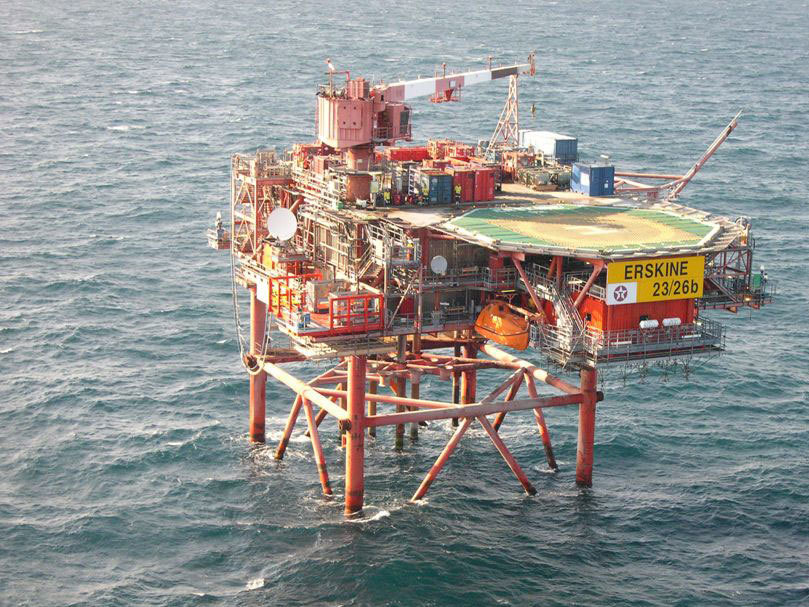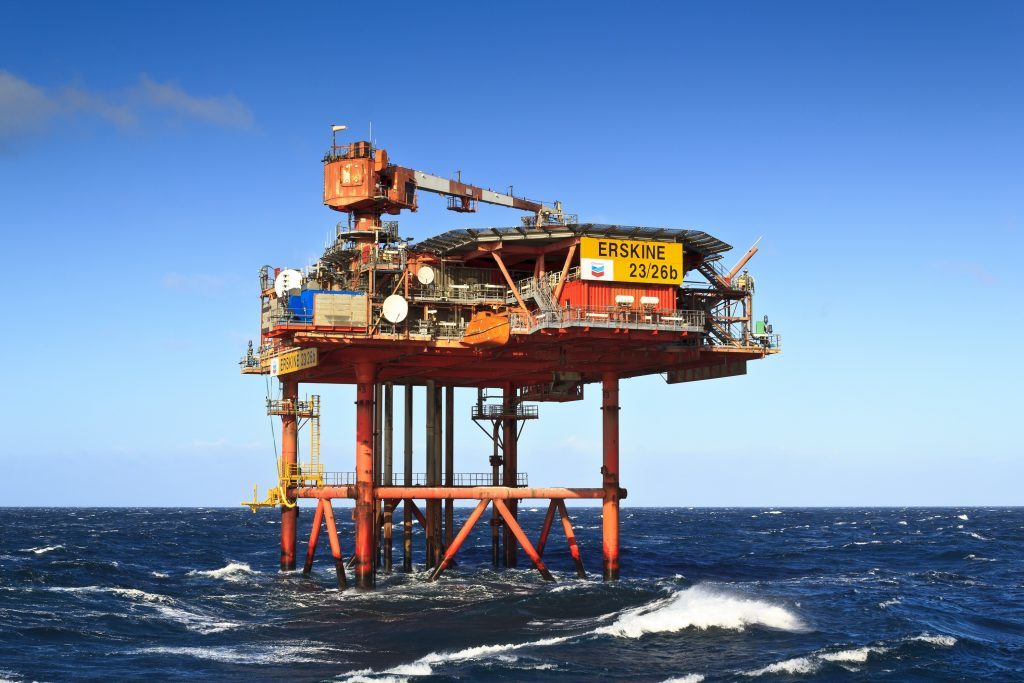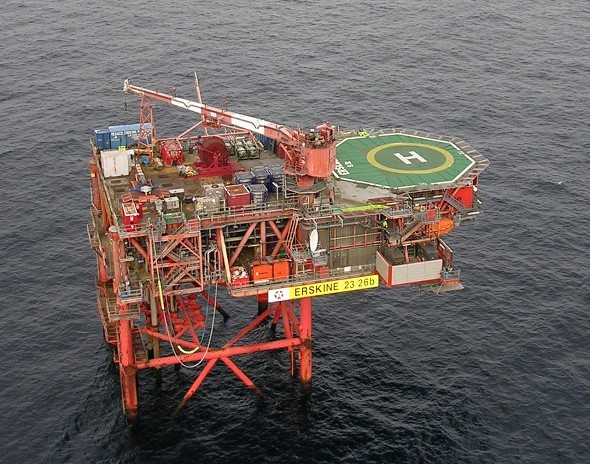
Today marks 20 years since oil and gas first flowed from Chevron-operated Erskine.
A Normally Unattended Installation (NUI) asset, Erskine is located 150 miles east of Aberdeen, in block 23/26a and 23/26b. It is remotely controlled from Shell’s Lomond platform and a 30 kilometre, 16″ multiphase pipeline line links the two. Erskine, a gas condensate field, was the first high pressure, high temperature (HPHT) field to be developed in the U.K. Continental Shelf.
Indeed, Erskine holds many ‘firsts’ in the North Sea. For example, it was among the first platforms to implement full scale NUI HP/HT wire line interventions from a mast rig, to introduce boat to platform coil tubing activities, and to implement NUI HPHT deep hole coiling tubing activities. Erskine was also the first platform to implement Walk to Work in the Central North Sea.
Andy Brooks, CUE’s Erskine Asset Manager, commented: “The collaborative approach we have adopted with our various co-venturers over the years has been pivotal to reaching this milestone. From the new technologies deployed on Erskine in the 1990s which are now adopted across Chevron’s global portfolio, to the more recent pigging campaign that took place in 2015, all have relied on the sharing of ideas, expertise and problem solving between all the partners. This is part of what makes Erskine such a great asset to work on and we are excited about the future with new partner Chrysaor.”
Dave Dillard, Chevron Upstream Europe’s (CUE) General Manager, UK Operated Assets, said: “Erskine’s commitment to continuous improvement, mutually beneficial relationships with partners and high priority for health and safety during the last 20 years is testament to values and behaviours which drive our business. I would like to thank everyone who has worked on Erskine and made this milestone possible.”
Last year, net daily production from Erskine averaged 2,215 barrels of liquids and 13.92 million cubic feet of natural gas. Partners with Chevron (operator 50 percent) on Erskine are Serica Energy (18 percent) and Chrysaor. (32 percent).


